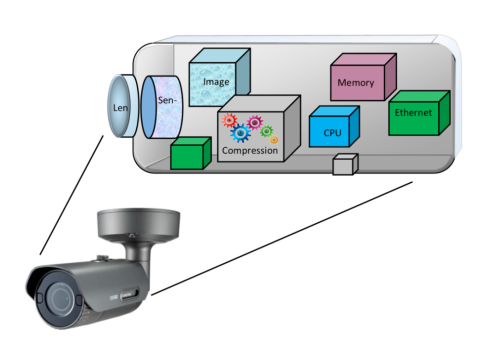Understanding the Operation and Structure of IP Cameras
IP cameras are advanced surveillance devices that convert optical signals into digital data for seamless video monitoring. If you're looking for an easy-to-digest explanation of how these cameras work—minus the technical jargon—this guide is for you.
How IP Cameras Work
An IP camera transforms light from a scene into digital video data. Here's a breakdown of its key components:
- Lens: Captures the image and directs light onto the camera sensor.
- Image Sensor: Converts the optical image into an electrical signal. Most IP cameras use CMOS or CCD sensors for this process.
- Signal Processing Unit: Handles tasks like image compression (e.g., H.264 or MJPEG formats), noise reduction, and transmission.
- IR Filter: Enhances image quality by filtering infrared light during daylight while enabling IR-based night vision in low-light conditions.
Many cameras switch between "day" and "night" modes automatically using mechanical or electronic IR filters, ensuring optimal performance in all lighting conditions.
Choosing the Right IP Camera
When selecting an IP camera, consider these practical features:
Compression Format:
- H.264 (streaming): Efficient for continuous video streams.
- MJPEG (frame-by-frame): Ideal for applications requiring high-quality still images.
Tip: In high-motion scenes, data rates can spike—up to 100% for H.264 and 20% for MJPEG.
Frame Rate:
High-resolution cameras often operate at 5–10 frames per second. Choose a frame rate that matches your surveillance needs.Additional Features:
- PoE Support: Powers the camera through the same Ethernet cable used for data transmission, simplifying installation.
- Built-in Storage: Some models offer slots for SD cards, enabling standalone operation.
- Analog Output: Useful for hybrid systems combining IP and analog cameras.
- Motion Detection: Detects movement in the frame to trigger alerts or recording.
Data Transmission and Bandwidth Considerations
The volume of data transmitted by an IP camera depends on resolution, frame rate, and compression. Use the following guidelines to estimate your system's bandwidth needs:
| Resolution | Frame Rate | Compression | Bandwidth |
|---|---|---|---|
| 1080p | 30 fps | H.264 | ~4 Mbps |
| 720p | 15 fps | MJPEG | ~2 Mbps |
For dynamic environments with high motion, plan for bandwidth spikes to ensure smooth operation.
Key Takeaways
When choosing an IP camera for your home or business, consider factors like image quality, network requirements, and essential features such as PoE or motion detection. Understanding how these cameras work and what features matter most will help you build a surveillance system tailored to your needs.
Explore a wide range of high-performance IP cameras on safsale.com

